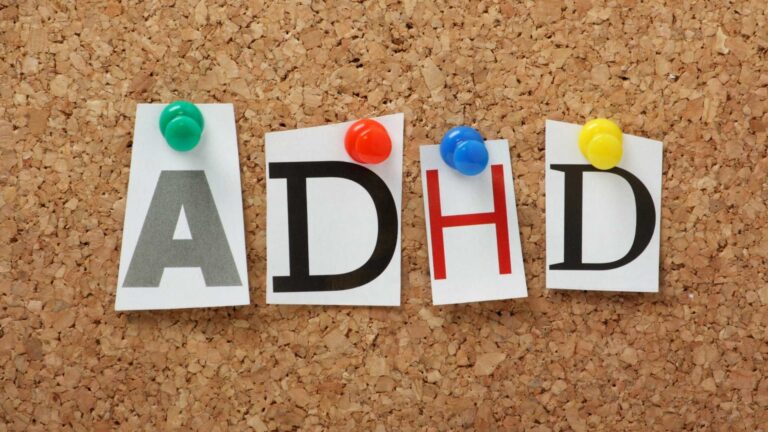What happens after an autism diagnosis?
Receiving an autism diagnosis for your loved one can be shocking news that leaves you with more questions than answers, or it may simply confirm something you already suspected due to your child’s behavior. But it’s important to remember that you are not alone. Autism is prevalent, with approximately 1 in 36 children in the United States being diagnosed with autism spectrum disorder (ASD), according to the CDC, and about 1 in 100 worldwide, according to the World Health Organization.
One of the most common questions caregivers have when they receive the results of an autism evaluation is, “What happens after an autism diagnosis?” And our response is almost always similar. First, take a deep breath and calm yourself. Second, it is essential to begin early intervention with the therapy method of your choice because while autism “has no cure,” there are behavioral and holistic approaches that can improve skill development while addressing challenging behaviors.
At ABA Centers of Rhode Island, we understand that this type of news is life-changing. That’s why we’ve developed this blog to guide you through the first steps to take after receiving the autism diagnosis of your kid. We invite you to read it and continue exploring our content on autism knowledge and ABA therapy.
Understanding the Autism Diagnosis
Upon receiving an autism diagnosis for your child, it is crucial to comprehend the multifaceted nature of autism. ASD is a developmental disorder characterized by challenges in social interaction, communication, and repetitive behaviors. Each individual with autism presents a unique combination of strengths and areas needing support.
As you experienced, during the diagnostic process, healthcare providers conduct comprehensive assessments to evaluate various aspects of your child’s development. They will explain the specific challenges your child faces, such as difficulties in understanding social cues, expressing emotions, or adapting to changes in routine. Additionally, the provider will likely discuss the level of support your child requires, which DSM-5 categorizes into three levels based on the severity of symptoms and the level of support needed:
Level 1 (Requiring Support): Individuals at this level require some support in social, communication, and behavioral challenges. They may have difficulty initiating social interactions, expressing their needs verbally, or adapting to changes in routine.
Level 2 (Requiring Substantial Support): Individuals at this level exhibit more pronounced difficulties in social communication and behavior. They may struggle with maintaining conversations, understanding nonverbal cues, and engaging in flexible behavior.
Level 3 (Requiring Very Substantial Support): Individuals at this level have significant impairments in social communication and behavior and require extensive support in daily activities. They may have minimal verbal communication, exhibit severe repetitive behaviors, and struggle with functional independence.
Understanding your child’s level of autism can guide intervention planning and support strategies tailored to their specific needs.
5 Steps to Follow After the Autism Diagnosis
It’s natural to feel overwhelmed when receiving unexpected news, such as a loved one’s autism diagnosis. Understandably, thoughts of uncertainty and concern about the future surface, and it’s only natural to wonder if we’ll have the resources to provide sufficient assistance.
However, it’s crucial to remember that you’re not alone on this journey. Nowadays, families have plenty of support in both information and treatment resources. We recognize that the well-being and happiness of your child are paramount, and we’re here to support you every step of the way.
Continuing with the guidance we offer parents at ABA Centers of Rhode Island, we suggest the following five essential steps:
- Educate Yourself: Take the time to learn about autism, including its characteristics, challenges, available interventions, and even about its history. Knowledge empowers parents to make informed decisions and advocate effectively for their children.
- Seek Professional Guidance: Generally, the health care provider recommends specific therapies that may be beneficial in the diagnostic report. However, you may also seek advice from a variety of professionals, including pediatricians, psychologists, or behavioral therapists.
- Access Early Intervention Services: Enroll your child in early intervention programs designed as soon as you get the diagnosis. According to the NICHD, at an early age, the child’s brain has remarkable plasticity, which makes interventions more effective in the long term. In addition, with early intervention, some children with autism make significant progress to the point where they no longer show symptoms of the disorder as they grow older.
- Foster Support Networks: Connect with other parents of children with autism through support groups, online forums, or local community organizations. Sharing experiences and resources with others facing similar challenges can provide valuable support and guidance.
- Advocate for Your Child: Be proactive in advocating for your child’s educational and developmental needs within school settings, healthcare systems, and community resources. Collaborate with teachers, therapists, and service providers to ensure your child receives appropriate accommodations, support, and acceptance.
Explore How ABA Therapy Can Teach Positive Skills
It’s essential to highlight that healthcare providers recommend therapy to improve specific aspects and foster positive behaviors in children with ASD. These may range from developing communicative skills using visual supports to systematically teaching everyday habits such as toothbrushing.
Due to its behavioral nature, the approach of applied behaviors analysis (ABA), widely utilized since the 1980s, is highly recognized and endorsed by experts. Nevertheless, it’s important to note that while ABA doesn’t ‘eliminate’ autism, it focuses on teaching new skills and reinforcing positive behaviors, which can significantly impact the development and quality of life of individuals on the spectrum.
ABA therapists employ a variety of techniques and strategies to promote positive behaviors in children. They use positive reinforcements, such as praise, tangible rewards, or playtime, to motivate and strengthen desirable behaviors. Additionally, they design highly individualized intervention programs tailored to each child’s specific needs and abilities.
ABA Centers of Rhode Island Helps You Navigate Autism
The road ahead after receiving the ASD diagnosis for your child has a component of understanding but also of acting quickly to seek interventions that will help your child live a more independent life.
At ABA Centers of Rhode Island, our programs are built upon a thorough analysis of your child’s behavior and continuously adjusted based on their progress. Our therapists also collaborate closely with you, providing the necessary tools and strategies to foster and maintain positive behaviors beyond the therapeutic setting, thus promoting comprehensive and sustainable development.
Please feel free to call us at (844) 444-7496 or schedule an appointment with our experts to explore the benefits of health insurance coverage and how we can offer support to you and your loved one with autism.








